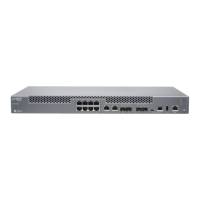CHAPTER 7
Service Chaining
•
Understanding Service Chaining on Disaggregated Junos OS Platforms on page 153
•
Configuring Service Chaining Using VLANs on page 154
•
Configuring Service Chaining Using DHCP Services on VLANs on page 155
•
Example: Configuring Service Chaining Using VLANs on NFX250 Network Services
Platform on page 156
•
Example: Configuring Service Chaining Using SR-IOV on NFX250 Network Services
Platform on page 160
Understanding Service Chaining on Disaggregated Junos OS Platforms
In many network environments, it is common for traffic to flow through several network
services on the way to its destination. These services—firewalls, Network Address
Translators (NAT), load balancers, and so on—are generally spread across multiple
network elements. Each device is a separate piece of hardware, providing a different
service, and requiring separate operation and management. This method of linking
together multiple network functions could be thought of as physical service chaining.
A more efficient model for service chaining is to virtualize and consolidate network
functions onto a single device.
Platforms running the disaggregated Junos OS software support virtualized service
chaining. These devices enable virtual network functions (VNFs) by supporting the
installation and instantiation of VNFs. VNFs can be linked together to provide network
services for traffic flowing through the device, as shown in “Virtual Network Functions”
on page 103.
Figure 13: Virtual Network Functions on a Disaggregated Junos OS
Platform
153Copyright © 2017, Juniper Networks, Inc.

